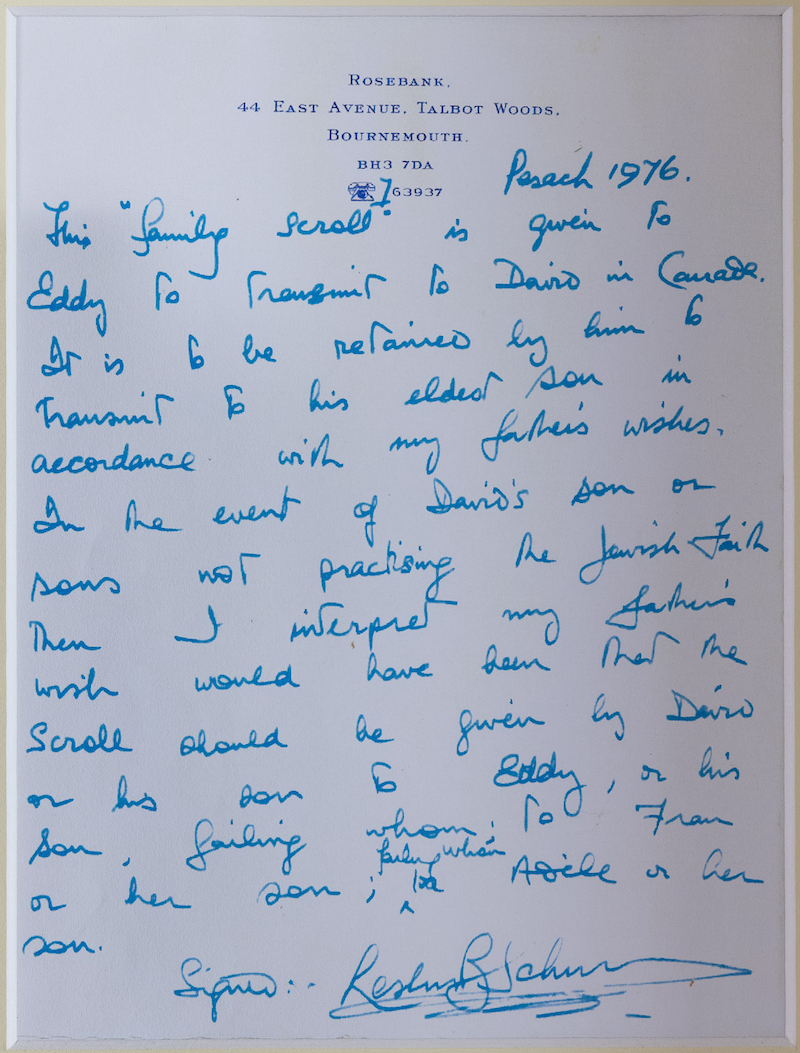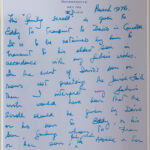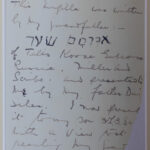Megillah means “scroll” or book in Hebrew. The copy of the Megillah (Book of Esther) in the Irish Jewish Museum is known as the “Scher” Megillah.
The Megillah of Esther recounts the story of Esther, a Jewish woman who is the heroine of the story which took place in the Persian Empire in the 5th or 6th century B.C.E. when the Jewish people were living in Persia following the destruction of the first temple. The Babylonian king Nebuchadnezer had taken the Jews into captivity in Babylon in the sixth century BCE only to be overthrown by the Persians. The story tells of a plot by Haman, a top government official, to annihilate the Jewish people. Esther, one of the many wives of the king Achashverosh, finds out about the plot and successfully rescues her people and brings about the demise of the wicked Haman.
The Esther Megillah is read each year on the festival of Purim to commemorate the salvation of the Jewish people in exile. Since the Talmudic period it has been customary to write the Book of Esther on parchment in the form of a scroll, and the rules governing its production are basically the same as those for a traditional Torah scroll. The Megillah reading is always preceded and followed by special Blessings.
This megillah in the collection of the Irish Jewish Museum, like all Megillot is handwritten in Hebrew on lambskin parchment using natural vegetable dyes. It was written in a small Shtetl (a Jewish town in Eastern Europe) called Telzh, Lithuania in the 1860’s by a scribe called Avraham who worked by day in a mill and laboured by night to finish the scroll and give it to his son David before he left on the long journey to America. The antisemitic laws and harsh economic conditions at that time in what was then the Russian Empire, meant that many young Jews left their families and villages forever in the hope of fleeing persecution and finding a safe home.
David carried few possessions with him, but Avraham’s scroll was his great treasure to remind him of his faith and the family he had left behind. Like so many others who tell the same tale, when his shipped stopped at Cork, he got off believing he had arrived in New York! He settled in Cork and when it came time for his son Isa to leave, he gave him the scroll to take with him and wrote a letter telling him to pass it on to his eldest son when the time came. It then passed to Leslie and eventually to his son David Scher, each time with a letter from father to son.
The Scher family who have strong roots in Ireland are now scattered around the world and in 2011 they gathered at the museum to loan in perpetuity their beloved family heirloom to the museum where it is now on display. On that day, David passed it symbolically to his son and grandson. In this way, it continues to be passed from generation to generation, a symbol of faith in exile.







